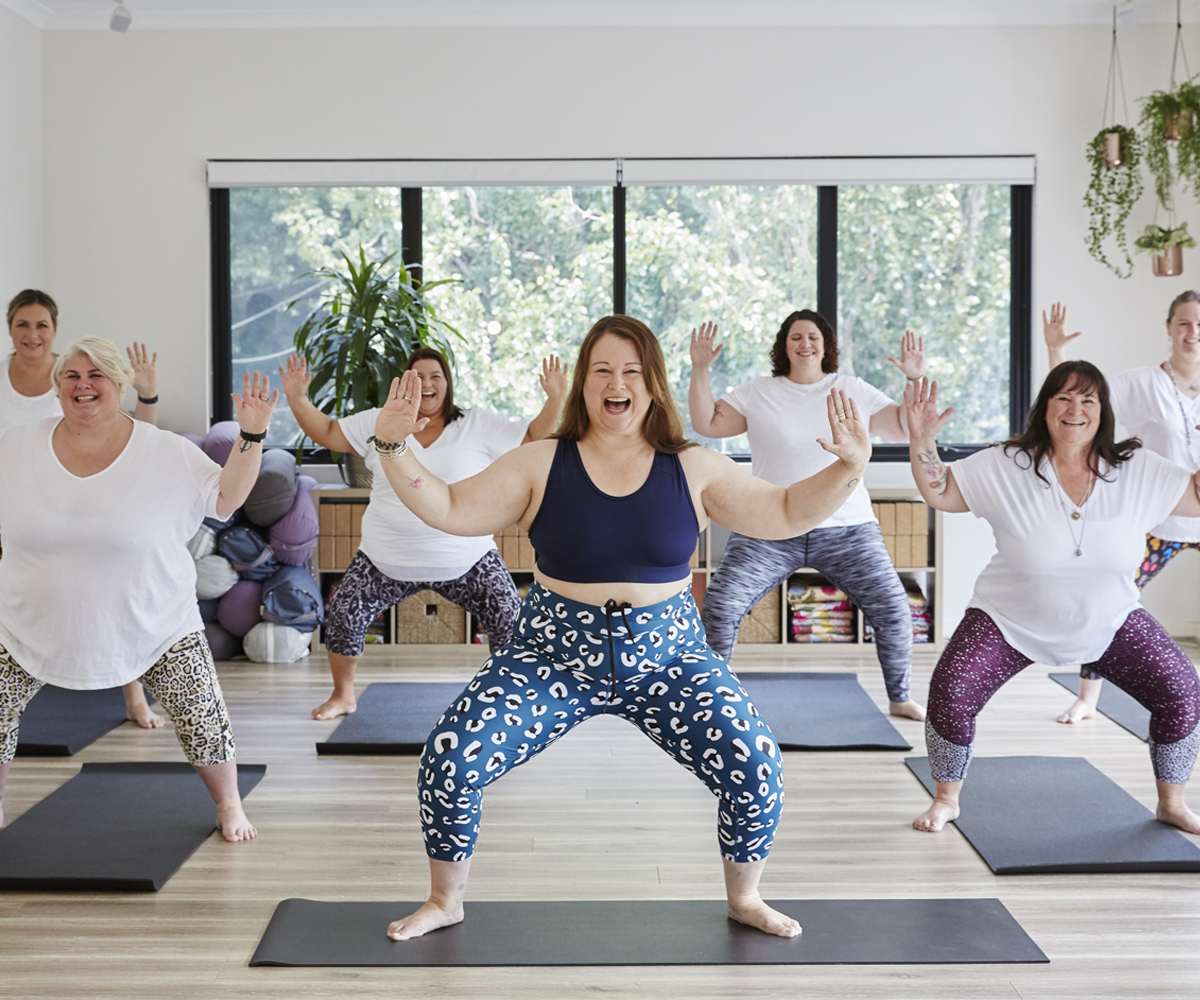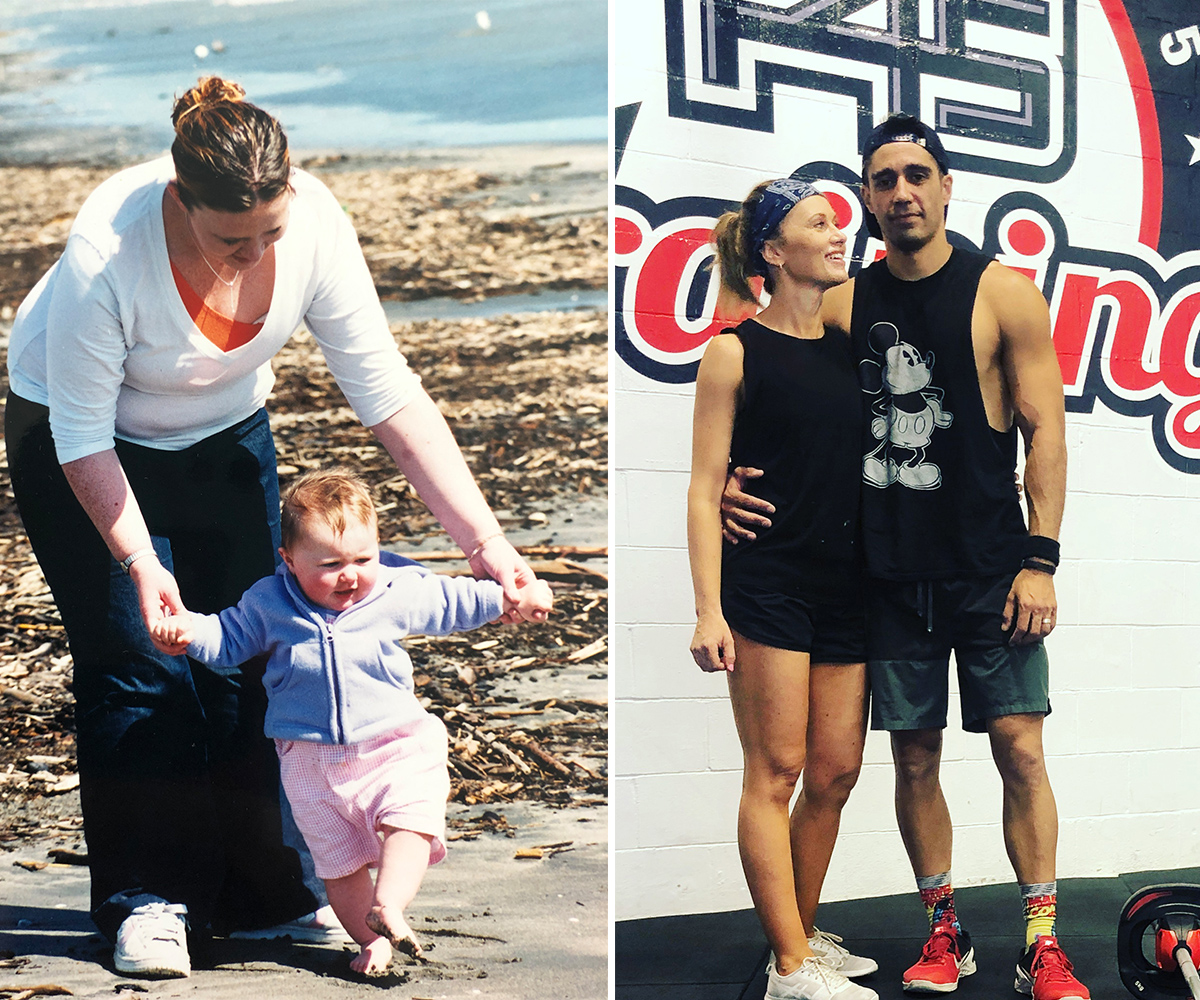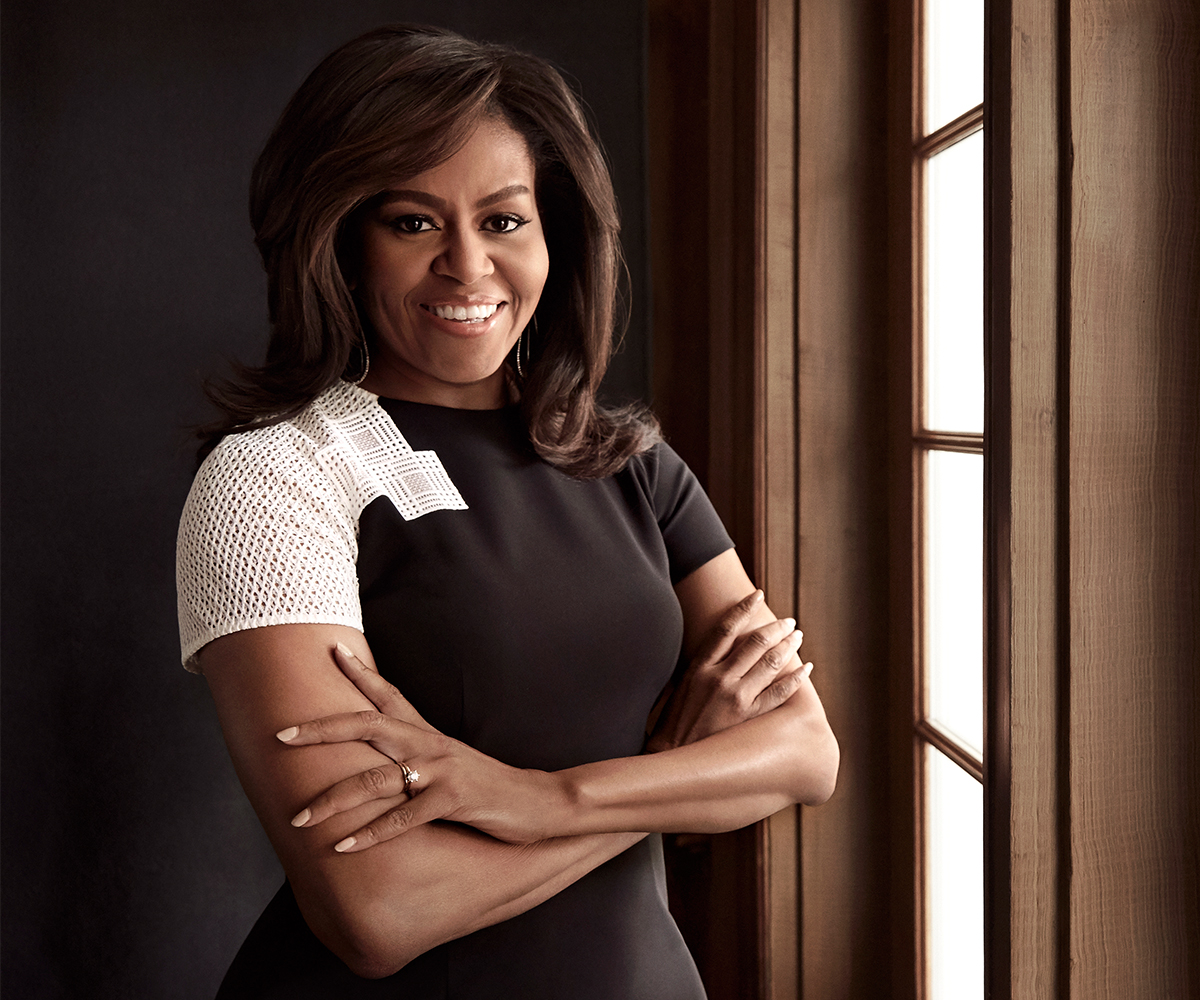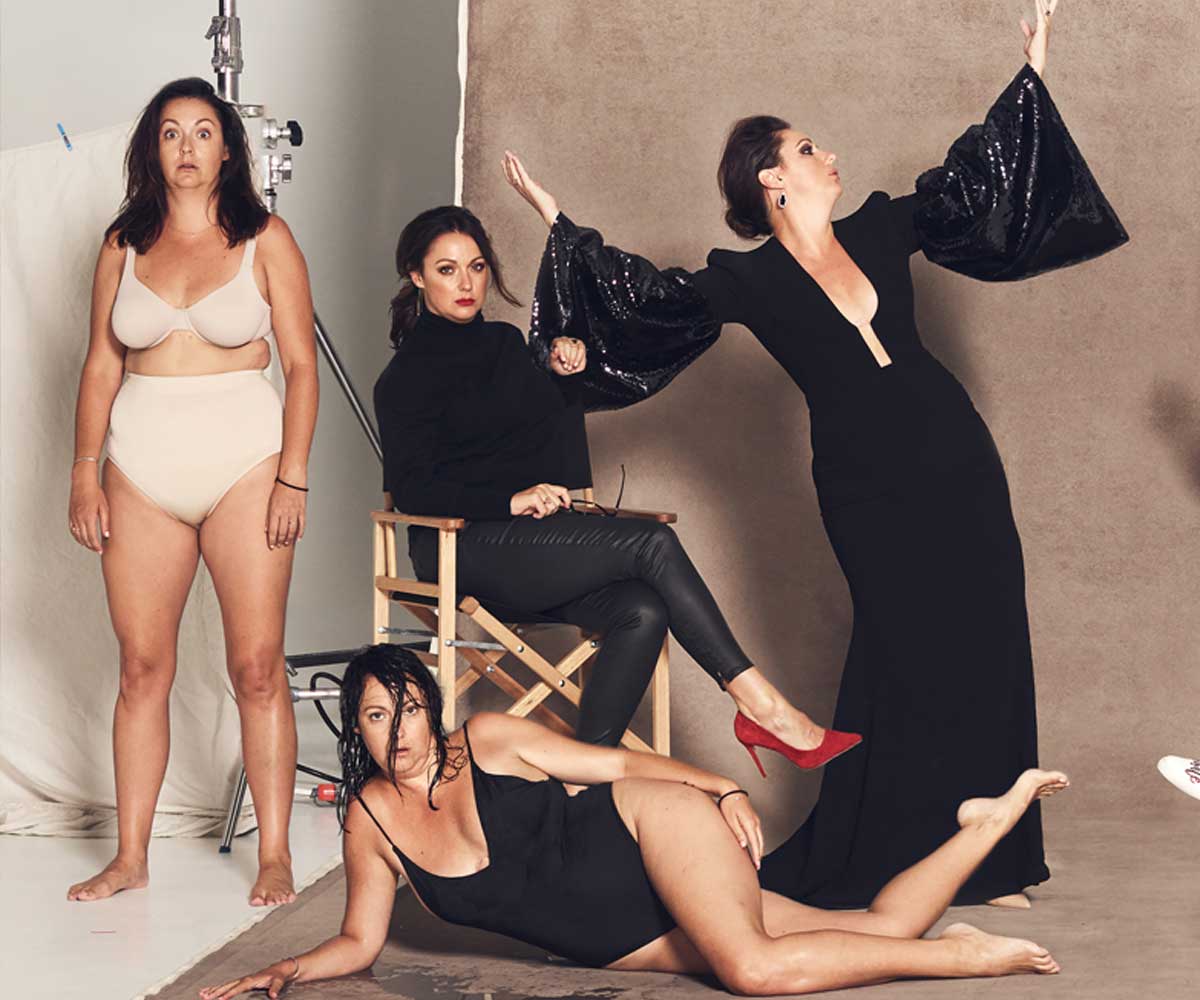The goddess in the Japanese sauna is my friend. As she lowers herself into the steaming pool I think of the classic fertility figure of our most ancient cultures.
My friend is a Venus de Milo whose delicate frame billows with luminous pink flesh. Her belly and breasts are generous mounds of fat. Her arms and legs are dimpled and round.
The sheer amplitude of her shape – its fecundity, its softness – glows in the dim moist air. In this primal setting, she is feminine beauty personified, worshipped for millennia. She is also blessed with low blood pressure and a steady heart rate.
I am 100kg lighter than her. Four years ago, my doctor told me to lose eight kilos or go on permanent high blood pressure medication.
“Are you saying I’m fat?” I asked testily.
But my brother had gone blind from a stroke at 42, and on both sides of the family similar conditions had resulted in serious cognitive and physical impairment. So, I did it.
By reading the science on regular fasting, cutting out snacking, reacquainting myself with how nice it is to feel hungry before I eat, and taking up daily yoga, I lost weight and avoided the meds.
I still have to be vigilant about treats and snacks, but five days a week, after a hearty breakfast, I fast until dinner. This pattern keeps my weight within the healthy range my doctor advises. I eat a meat-free diet with lots of fermented and leafy green vegetables, legumes, seafood and gluten-free baked goods. I hover comfortably around 63kg.
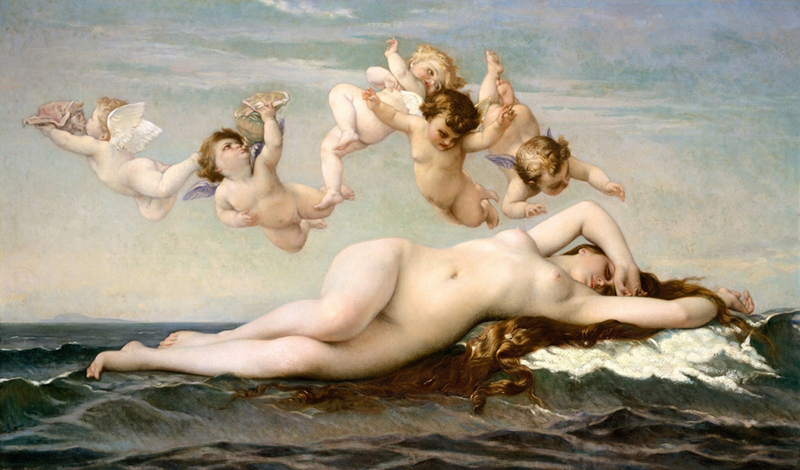
The birth of Venus, by Alexandre Cabanel 1875 Image: Shutterstock
On the surface, my beautiful friend and I would appear to occupy opposite ends of the body spectrum.
She struggles to avoid her preferred diet of family-sized chocolate blocks, pizza and cake. Outside the sauna, walking is painful, and the strain on her internal organs and spine is becoming a daily torture. She is brainy, big hearted, successful and dynamic, but her size increasingly dominates her lifestyle.
She is trying hard to shift away from fast food to smaller portions and fresh fruit and vegetables. She has tried every diet under the sun. She says she doesn’t have the strength to face another attempt to lose the extra weight and maybe fail all over again.
What do we have in common? Like many women, we struggle daily with the feeling that our bodies are not what we want them to be.
If I had a dollar for every time I’ve looked in the mirror and said “yuck” I’d be a billionaire. And what of the times I’ve skipped a social engagement because I didn’t feel attractive enough? My friend doesn’t even have mirrors in her bathroom.
These are the symptoms of something body image activist Taryn Brumfitt would describe as “weight stigma”. Others would call it the most effective tool for the oppression of otherwise healthy women ever invented. Nor are men immune to this combination of fear, shame and guilt that Taryn and many health experts worldwide agree is “more unhealthy than fat”.
There are many paths to this widespread affliction, and dieting won’t fix it. Every time you diet, the statistics tell us, you become 18 times more likely to develop an eating disorder.
Of those who intentionally lose more than 10 per cent of their body weight, 80 per cent will regain that weight within a year. The consequent weight cycling, or yo-yo dieting, has been implicated in type 2 diabetes, hypertension and coronary heart disease.
Behind my friend’s compulsive eating disorder is a history of trauma and abuse, which has embedded negative attitudes towards her body, and by extension her whole self, that need constant soothing. Over the years, food has become her lover, her mother and her best friend.
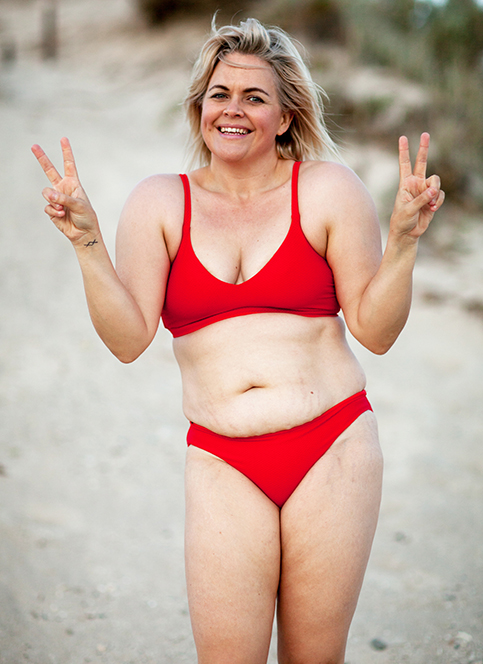
Former body builder Taryn Brumfitt says life is now more joyful. Photo: Body Image Movement
My teen years were dominated by starving, and anorexic tendencies recurred in my 20s and 30s whenever I was stressed or unhappy in love.
While I’ve never been more than 10kg overweight, the negative self-talk I’ve levelled at myself over the decades would shock the people who see me as a confident, attractive, successful person.
I picked it up from my mother, who dieted to no avail my entire life, and my willowy grandmother before her, who fretted about body fat well into her 90s.
For Taryn (who has explored body image and the associated self-flagellation in her acclaimed documentary Embrace and a new book Embrace Yourself), the many years of worrying about fat are over. She says: “I haven’t had a bad day about my body in years.”
The busy motivational speaker and author says that since she stopped “fat-shaming” her body, her entire life has become “richer, more bountiful and more joyful. I’d never have made a film or written a book if I hadn’t embarked on this journey.”
“But what if you are fat and you feel awful about it?” asks Siobhan Hannan, a therapist who avoided the beach throughout her teens and well into her 30s because she was convinced she had “the wrong” body.
“We have to be careful about suggesting that there is something wrong with you if you can’t accept your shape, because some people can’t,” she says.
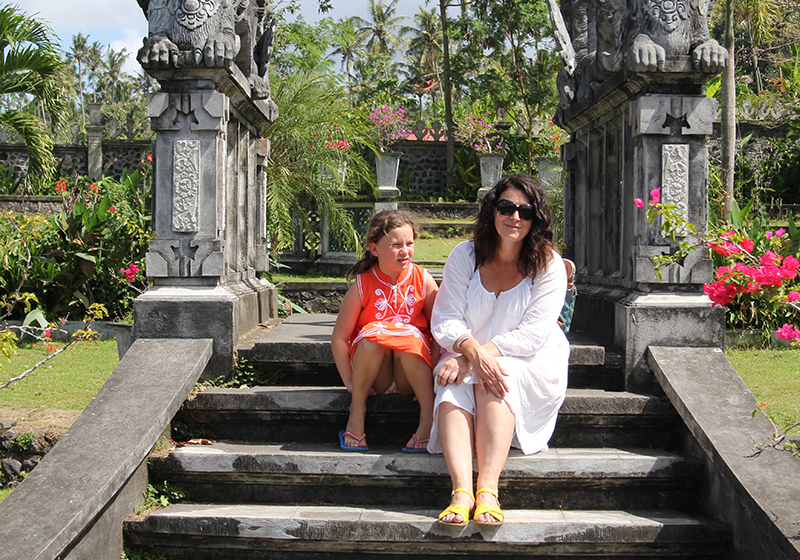
Former dieter Siobhan Hannan emphasises sport and strength to her daughter.
At 50, Siobhan is gorgeous: stylish, accomplished and whip-smart. The last adjective most people would attach to her is overweight.
But even after 20 years of changing shape and learning to be comfortable in her own skin, she says, “I still worry that my daughter will grow up with my body type rather than her father’s, because it’s really difficult for him to put on weight. I don’t want her to go through the paralysing anxiety I’ve suffered. My husband and I emphasise strength and sport and she swims, surfs and dances. But at 11 years of age, it’s already there – the times she mentions someone else who is tall and thin or talks about how to get a six-pack.”
The commercial fitness industry doesn’t always help. Taryn had her epiphany at a body-building competition.
After 15 weeks of punishing workouts and dieting, she’d achieved the impossible. She’d birthed three children and spent years loathing her stretch marks and wobbles, but now she was parading a tiny bikini body on stage.
As the applause rose during what should have been a triumphant moment, she knew that the pain and self-denial had not been worth it.
“I didn’t feel great. I didn’t feel successful. My bikini body took too much time and obsession. And over the next few months that forced me to ask, ‘What’s the alternative?'”
Today Taryn says she wastes absolutely no time worrying about what she looks like. “I went surfing with my kids last week and when I stood on that board in my wetsuit, the only thing I was thinking was how wonderful it felt. I couldn’t have done that 10 years ago.”
Chasing an impossible ideal
Why is it so hard to stop worrying about the way we look? Why have the vast majority of women, and increasing numbers of men, come to believe that “perfect” bodies produce high self-esteem and happiness?
According to Dr Nives Zubcevic-Basic, senior lecturer and director of the Master of Marketing at Australia’s Swinburne Business School, we’ve been brainwashed.
“The ideal dictated by the mass media is virtually impossible for people to achieve,” says Dr Zubcevic-Basic, “without excessive dieting, excessive exercise or both.”
It’s even more bizarre that cultures that used to regard bulk as a sign of wealth and success “now have a growing prevalence of eating disorders”, she says.
And far from signifying wealth and success, extra weight is now judged as the result of laziness, poor self-control and failure.
Social media, with its emphasis on selfies and “likes”, reinforces the judgemental environment, intensifying the trend of aspirational perfectionism that emerged in the Mad Men era of 1950s advertising.
That’s when corporations and manufacturers discovered that if you could convince people en masse that they were imperfect, and therefore not desirable or successful, then you could sell them an image, a lifestyle or a product that promised to rectify those things.
Today, just over one-third (34 per cent) of Australian girls report that body image is an obsession, while a similar number of young Kiwi women say they are unhappy with their weight.
“If we’re serious about improving girls’ body image,” says Dr Bree Abbott, researcher at the School of Psychology and Exercise Science, Murdoch University, in Perth, “we need to shift the focus from appearance to function and teach girls to value more than just looks.”
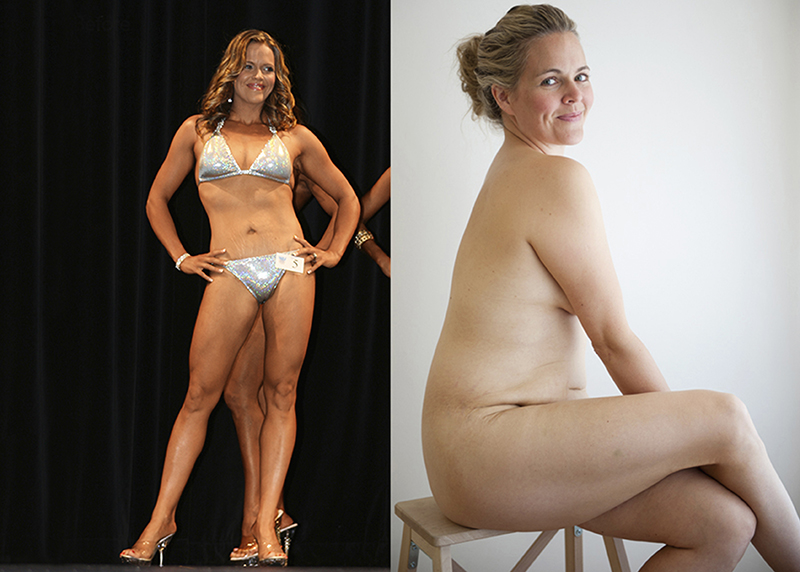
Taryn’s body-builder physique and the more relaxed self she’d set free after a change of heart Image:Kate Ellis
That shift was key for Taryn. “I’ve fundamentally changed my ideas about what my body is for,” she explains.
“It’s not an ornament. It’s not there to be looked at. It’s there to get me through my life so I can enjoy it to the maximum.”
Taryn’s career as a body positive activist began six years ago when she decided to challenge social media with what was then a radical Facebook post. Subverting the classic “before and after” shots of unhappy fat girl and new skinny self, she posted before and after shots of her body-builder physique and the more relaxed self she’d set free after a change of heart.
The post went viral (over 100 million likes and still climbing) and changed her life. That sounds simple but Taryn is the first to warn it doesn’t just happen by magic. “I had to educate myself,” she says.
“I did a lot of reading and searching, and I learnt a lot that helped me change.
“For instance, what’s the point of putting a tape measure around your waist to measure your health?” says Taryn.
“You’re better off discovering how much visceral fat you have around your internal organs, which is the real killer, than worrying about subcutaneous fat.”
Are we at crisis point?
Whether you’re metabolically healthy and obese; obese and struggling with associated health issues; or one of the unhealthy skinny people who are twice as likely as fit fat people to develop diabetes – all are affected by a body-mind relationship that has now reached a crisis point.
“Australian children could live shorter lives than their parents for the first time in history because of high rates of excess weight and obesity,” warns Jane Martin, a senior fellow at the University of Melbourne.
And in New Zealand, teens are more fat and less fit than their parents’ generation, according to Otago University research.
In the Western world, we’re surrounded by more high-energy food than our ancestors ever dreamed of, and it’s become a metabolic disaster.
“Things are getting worse, not better,” says Jane. “There’s more advertising for junk food at sports events than for gambling or alcohol but we don’t notice it.”
Here’s the double bind.
If you’ve grown up being deluged with food advertising, as most of us have, it takes great presence of mind to reject the brainwashing and say no to the breakfast bars, sugary snacks, energy drinks and packets of chips that pop up on all our devices, and in public places, demanding our attention and telling us we will feel a whole lot sexier and more wonderful after we’ve indulged.
The key, say many experts like Taryn, is to reject the advertising spin about our bodies and what they want, and connect with how our bodies actually feel.
“I started by a big rethink of what my health means to me,” she explains.
“For me, it’s about having lots of energy, being able to dance and sing without being out of breath. It’s about feeling rested and connected to nature.
“Health operates at so many levels – spiritual, emotional, and mental,” says Taryn.
“I don’t look at myself and see tuck-shop arms and drooping breasts – I see the strength that’s carried and fed my children. I’m so grateful to my body for all the things it allows me to do. I’ve gone from hating it to loving it.”
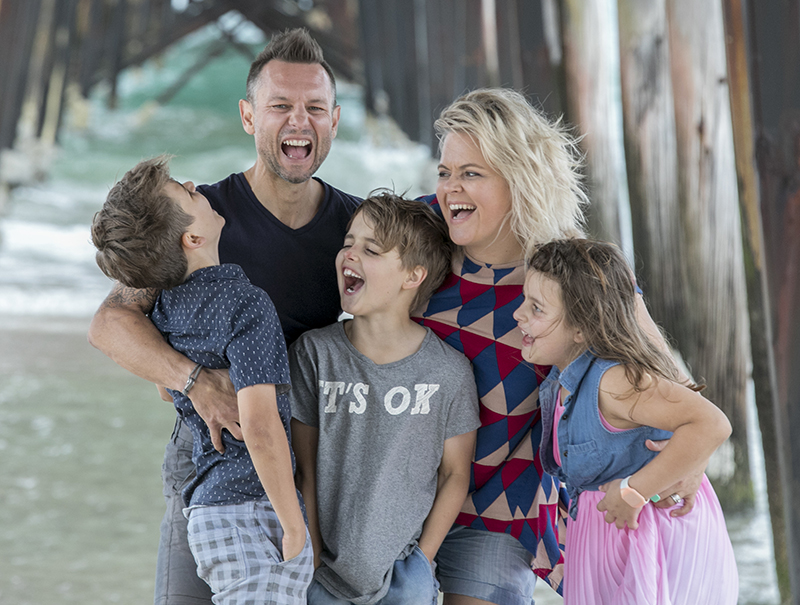
Taryn enjoys an active lifetsyle with her family and spends no time worrying about what she looks like Image: Meg Hansen
Treat yourself with compassion
Sarah Harry, a clinician, educator and creator of Australia’s Fat Yoga movement, says she has “seen hundreds of people recover from the direst conditions. The body is absolutely remarkable if you give it a chance. But it has to start with compassion.”
Fat Yoga has 1500 regularly practising yogis, ranging from size 16 to 30 in Australia, and courses are run in Auckland too. Sarah says they don’t even use the word obese.
“It’s a stigmatising medical term and, like dieting, it cuts us off from listening to our bodies, from body acceptance, from body trust.”
While many women use their bodies as buffer zones in the aftermath of trauma, Sarah says that people with “bigger bodies also suffer daily micro-traumas – they get paid less, promoted less, and are either over tested or under tested by doctors”.
“When I started this,” she insists, “no one was doing it in a compassionate way. It was important to me to create safe, brave spaces to help people connect with themselves without judgement. That’s how you recover.”
Taryn agrees that just listening to your body has a tremendously stabilising effect. It has improved both her health and her mindset.
“I now choose to eat food that makes me feel great,” she says, and most often that’s food that’s fresh and nutritious. She likes blueberries in the morning, sometimes a piece of chocolate after dinner.
“If I eat a cheeseburger, it sends me signals afterwards that don’t feel good. I’ve learnt to eat what does give my body joy. Basically, I’ve removed the narrative in my head that food is bad,” she explains.
Taryn is not alone. Last year’s scandals surrounding the Victoria’s Secret lingerie brand and its yearly catwalk of stick-thin models, tales of teen models eating cottonwool to feel full, and celebrities who don’t eat for days before making major public appearances, are beginning to create a backlash.
Pop star Rihanna recently released the second season of her Savage X Fenty lingerie line with a parade of trans, fat and pregnant women of all colours and shapes.
The growing number of successful plus-size models with “womanly” shapes, such as Laura Wells and Chelsea Bonner, are challenging decades of messaging.
And on Instagram there is a whole world of body proud cohorts, such as I Weigh, started by the actress Jameela Jamil, which encourages women to share who they really are and what they really weigh. I Weigh has more than 100,000 followers.
“After that first Facebook post went viral, I did get an overwhelming number of emails and messages from women who were so lonely and unhappy in their body hatred; it was very sad,” says Taryn.
“But increasingly the letters we get at Body Image Movement are from women saying, ‘I’ve changed. I feel fabulous.’ We are finding our voices and they are growing louder. We are seeing the shift to more and more joy.”
Perhaps we’ll get over this, as we identify the “ideals” that have, for centuries, encouraged women to be small, submissive and quiet.
At the least, the fusion of skinny princess syndrome, fast-food brainwashing and punitive diet regimens has met its match in the new breed of body-loving evangelists like Taryn and Sarah.
“Watching someone who has never worn bathers get into a 1950s bikini and go nuts with how great it feels – that’s the pure joy of being connected,” says Sarah.
“Just imagine,” agrees Siobhan, “if all the energy women put into negative thinking about themselves was directed into radical self-acceptance? We’d be running the world!”
